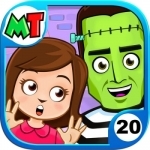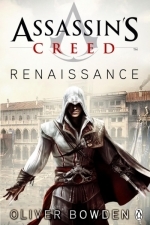
Plague Inc: Scenario Creator
Utilities and Games
App
Enter the lab and develop your own custom scenarios for Plague Inc. with this powerful yet easy to...

My Town : Dance School
Entertainment and Games
App
Welcome to My Town's new Dance School, a must have addition to your Town. Practice in ballet lesson,...

BeautyPlus -Snap, Edit, Filter
Photo & Video and Social Networking
App
• “Best Photo Editing App on the market!” - CaprianaGrace • Get the perfect selfie EVERY...

QR Studio Pro
Business and Productivity
App
QR Studio Pro reinvents QR Code Reader and Generator. It helps you to create Colorful QR code either...

My Town : Haunted House
Games and Education
App
It’s a regular house when the lights are on, but when you switch them off it becomes a Haunted...

MythCatchAR
Games and Entertainment
App
A wonderfully simple way to entertain your child! Fun Mythical Creatures are ready to be caught...

Toca Tea Party
Education and Entertainment
App
*Parents Choice Awards 2012 - Gold Winner!* *Children's Technology Review - Editor's Choice* "Must...

Shifter Protection Specialists, Inc Box Set
Book
Spine tingling excitement builds as danger lurks around every corner. The scenes and details are...
Paranormal MM Romance
Connor Sheffield (293 KP) rated Assassin's Creed: Renaissance in Books
May 15, 2017
We begin with the story following his father however, another great installment in this series that gives us more back story that you can only find fragments of within the game and other media such as the short film Assassin's Creed Lineage. Ezio's story begins shortly after, when his father and brothers are killed, due to a betrayal, leaving behind Ezio, his mother and his sister. Together they flee the city and Ezio's story begins to unfold as he learns more about his father's secret, and the order to which his father and their ancestors belonged to. The Assassins.
Set in the beautiful time of Renaissance Italy, we follow Ezio as he travels to and from multiple cities, including his home, Florence, but also to the famous cities of Venice, Tuscany, and Rome. Each city introduces him to new friends, new enemies and more secrets begin to reveal themselves to Ezio which allow the character to become wiser and more developed over the years.
Oliver Bowden let's his readers delve far deeper into the stories of the characters than the games. The games are enjoyed more so for their game play and the freedom of your actions as you run around these historical landscapes. The books that Bowden has written, let us enjoy the adventure and the twists and turns of each story, told to us as though we were in the animus ourselves watching over Ezio but with no control over what happens to him.
If you play the games, then you know that each video game, in each of the settings, you will meet a historical figure. One thing that makes the franchise so brilliant is that the historical settings, and some of the events that takes place are historically accurate to the dates they happen. For example in the first Assassin's Creed, you meet King Richard the Lionheart, during the crusades in Jerusalem. In Assassin's Creed 2, and this novel, we are introduced to none other than the famous painter and inventor, Leonardo Da Vinci. Yes, THAT Leonardo Da Vinci, the same man that painted some of the world's most famous works of art such as The Mona Lisa.
As always Bowden's descriptive writing lets the reader truly feel the events unfold within our minds, and experience everything that the characters experience. The great joy of reading a book, is the imagination it can place into one's mind. As said before in my review on The Secret Crusade, the story is familiar and yet there are unfamiliar moments, that make the familiar story make more sense, and gives the readers and video game players a brand new experience.

